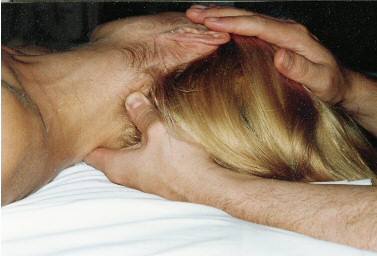|

"The St. John Method of NMT, developed by Paul St. John is based on research that identifies the fundamental causes of pain. The techniques
are supported by scientific neurological laws that explain how the central nervous system initiates pain responses in the
body."
It is a very specific, thorough and effective "Deep tissue" Massage approach
that really gets to where the pain is and systematically works it out! It focuses on realignment of the body to structural
stability by identifying areas of soft tissue compression and blood flow restriction and creating a "release"in the tissue
by the use of specific massage and trigger point (holding points of sensitivity until the pain relaxes) techniques. It's a
great Therapy for those who want their Massage Therapist to "get to the heart of the matter" when the goal is to treat the
pain. It is a much more effective approach than "non specific" or "general therapeutic massage" in terms of releasing the
body from pain and restoring structural balance.
The
St. John Method of NMT identifies five sources of pain:
1. Ischemia
is a lack of blood supply to the soft tissues that causes them to become very sensitive to the touch.
2.
Trigger Points occur when nerves fire impulses at a rapid speed into an area of
the body other than that which has been traumatized. This phenomenon produces an effect where the real cause of pain
is far removed from the actual site of pain. Trigger points will inhibit proper blood flow, which initiates a vicious
cycle of pain and discomfort.
3. Nerve compression or entrapment
is pressure on a nerve by bone, cartilage or soft tissue. As the tightness of the soft tissues that surround nerve fibers
increase, more and more pressure is brought to bear on the nerve, resulting in strangulation or entrapment of the nerve against
a bone or cartilaginous structure such as a disc.
4. Postural distortion
is an imbalance of the muscular system resulting from movement of the body off the coronal, mid-sagittal and horizontal plane.
Trauma, gravitational pressure or psychological patterning causes the soft tissues to assume a weight-bearing function and
thus become thicker, denser and harder resulting in muscle contraction, body distortion and pain.
5. Biomechanical
dysfunction is an imbalance of the musculoskeletal system resulting in faulty movement patterns. Repetitive
strain of certain soft tissues results in adapted movement patterns that become muscular "habits" and must be re-educated
to function properly.
More Info:
|

